A step-by-step tutorial on casting on stitches with 2 needles (including a video) to achieve a super stretchy edge.
Does your pattern ask for a two-needle cast-on? But you only know how to do it with one? Well, then you came to the exact right place because this tutorial is all about it. I included a lot of pictures and even a video so you can learn how to cast on knitting with two needles the easy way.

Casting on stitches with two needles instead of one will result in a much stretchier edge. So, it will be perfect for lace projects, a 2×2 rib stitch, and similar knitting stitch patterns. It’s a bit more complicated to do, but it’s worth investing the extra time because it does not only create a very neat and sturdy edge, it also is very easy to knit across in the first row.

But there is more. This tutorial comes with a simpler version (scroll all the way down) that is also quite stretchy and not as complicated as the advanced technique. It can be a beautiful alternative for easier patterns where you still want an extra bit of give.
Reading tip: Check out my tutorial on the German Twisted Cast on which is even stretchier. Or my tutorial on the single cast on – the perhaps easiest method for beginners.
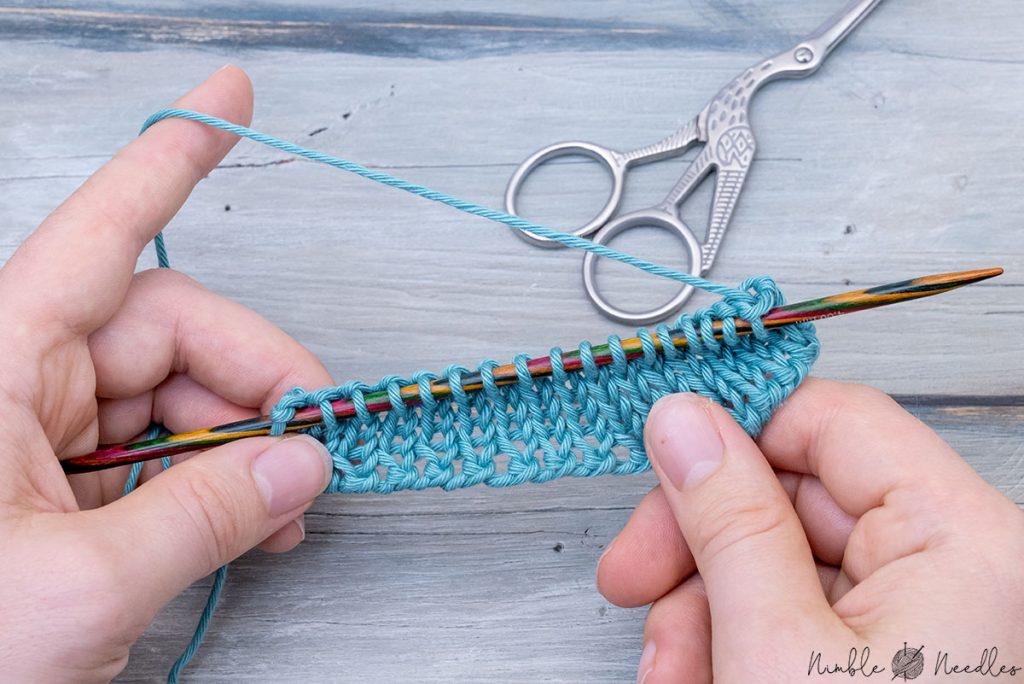
Important disambiguation: There are many different ways to cast on stitches using two needles, in particular, the knitted cast-on. Judy’s magic cast-on is another example. These techniques, however, do not result in a stretchy edge.
With that being said, here’s how to cast on knitting with two needles!
Note: I earn a small commission for purchases made through links in this article.
An easier way to cast on stitches with two needles

The version above is admittedly a bit more complicated. So if your hands are not as nimble, you can also treat the two needles as one and use the wider circumference to give your edge that extra bit of give. In short, do a normal long tail cast on around two needles instead of one (in fact, that’s the way I teach it to begin with).
Step 1: Hold both needles parallel and start with a slip knot. You can use the exact same needles you want to knit your project with. Leave a tail that is at least 5 times as long as your projects should be wide (here’s how to calculate the yarn requirements in a more accurate way).
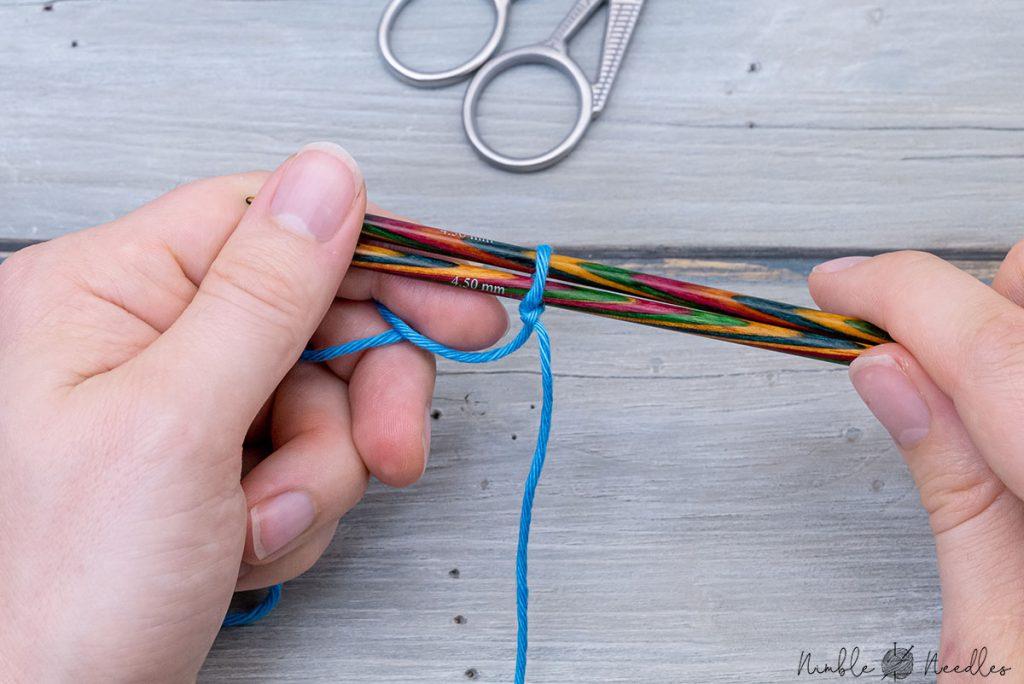
Step 2: Pick up the yarn the way I showed you above.
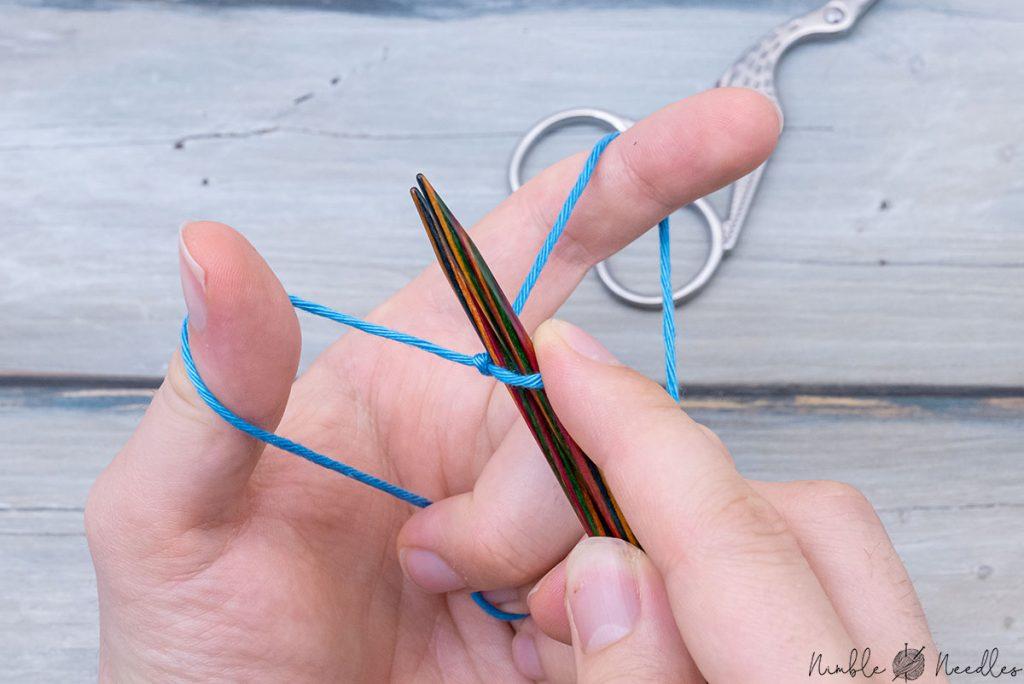
Step 3: Insert both needles into the loop around your thumb from below.
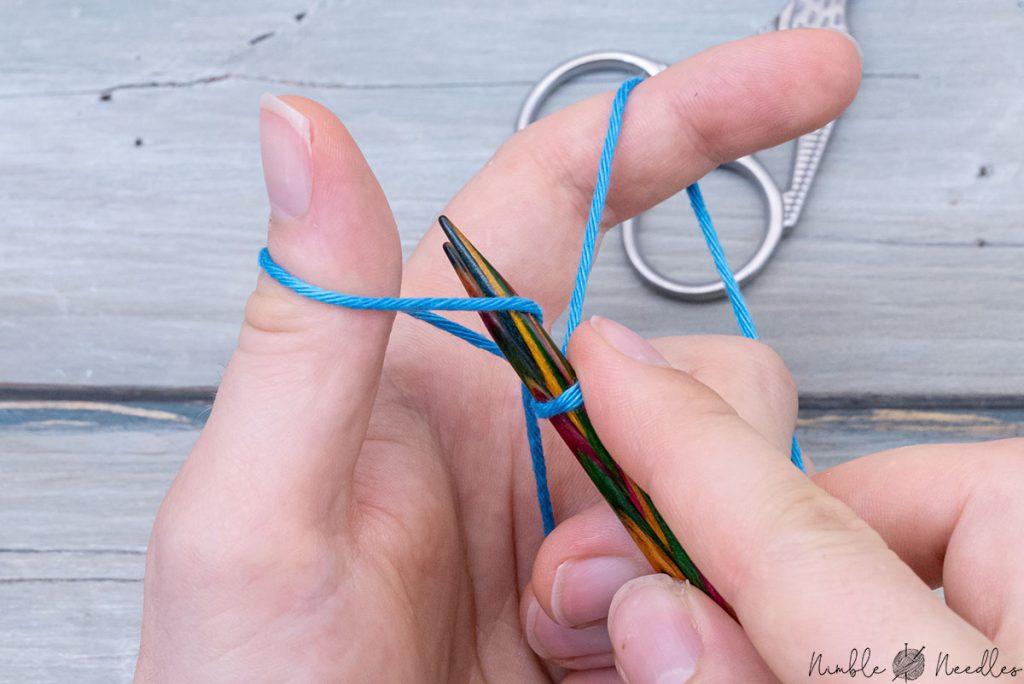
Step 4: Grab the yarn towards your index finger coming from above.
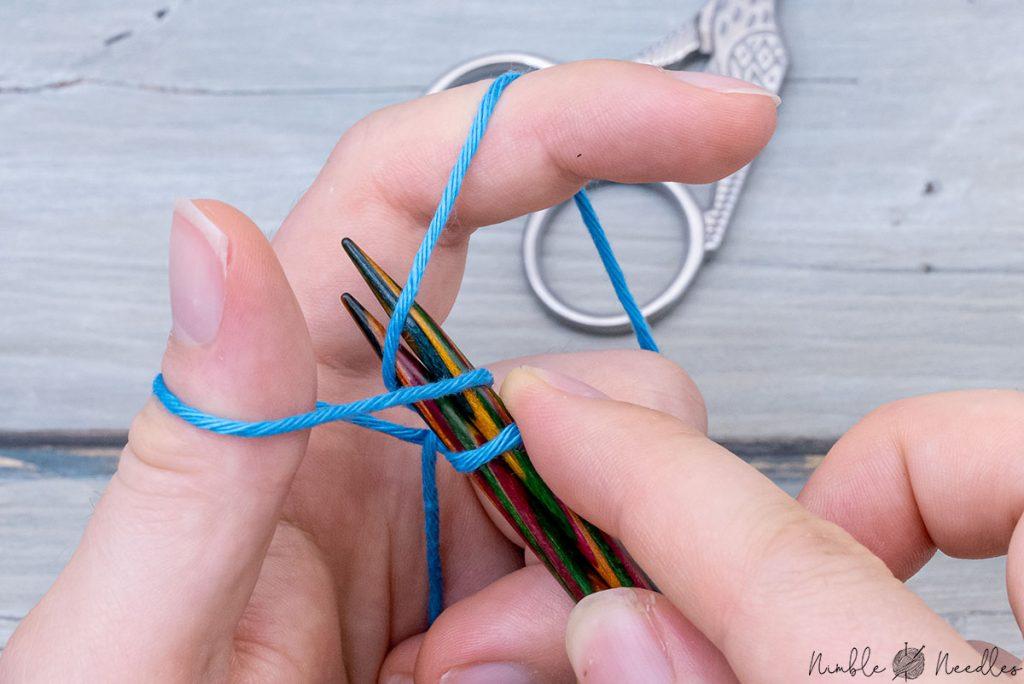
Step 5: Pull the yarn through the loop.
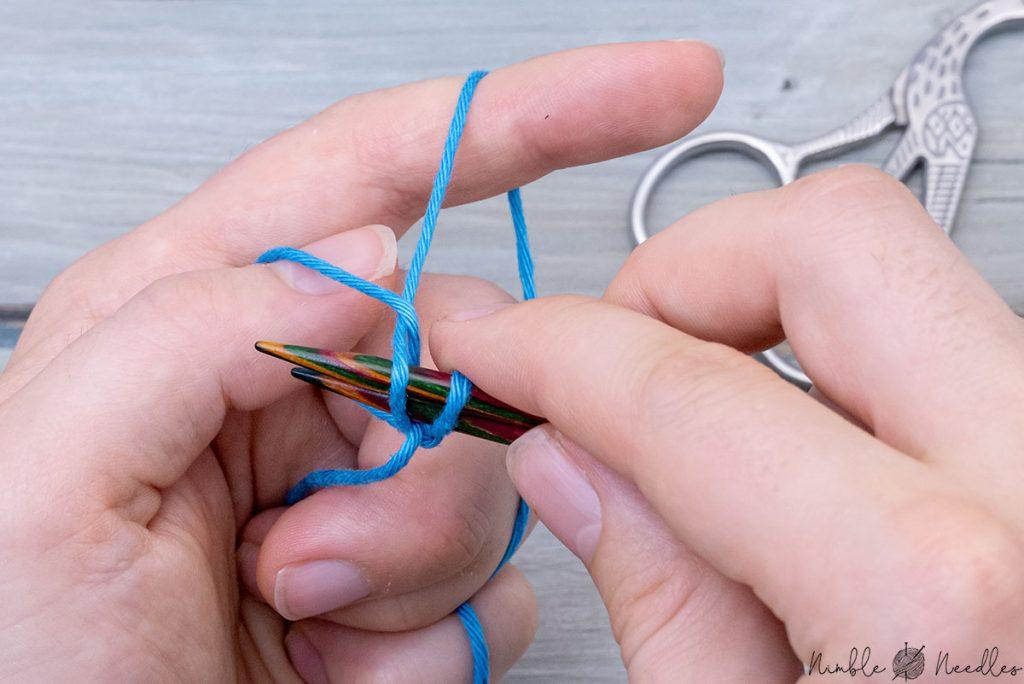
Step 6: Pull out your thumb (so just bend it), and tighten up by stretching the yarn out with your thumb/index finger.
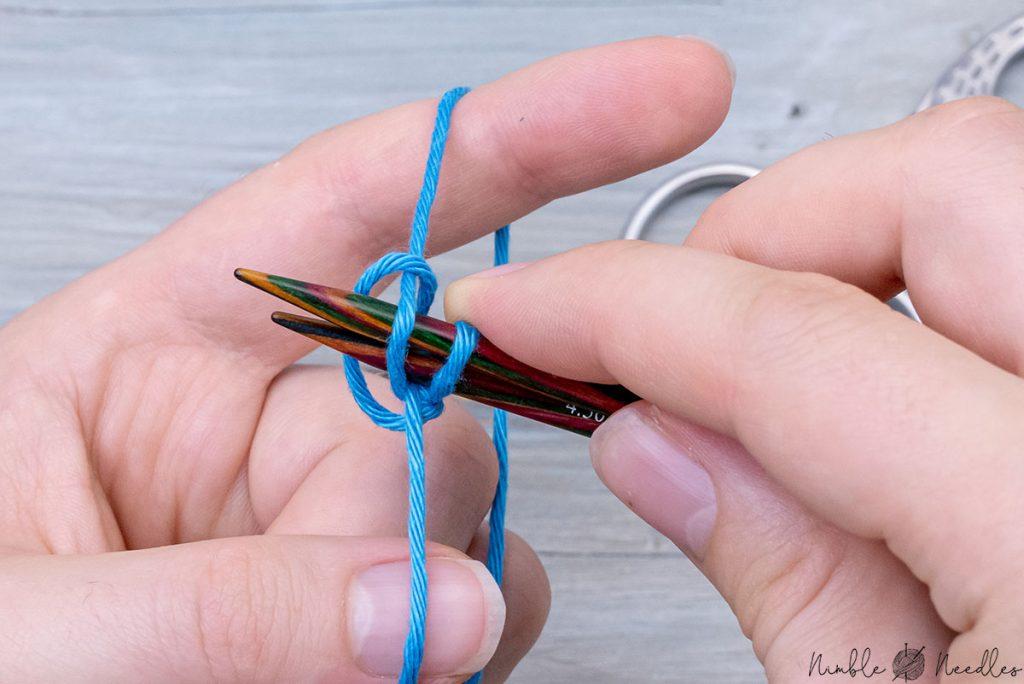
Step 7: Pull the needle towards you to create a new “slingshot”.
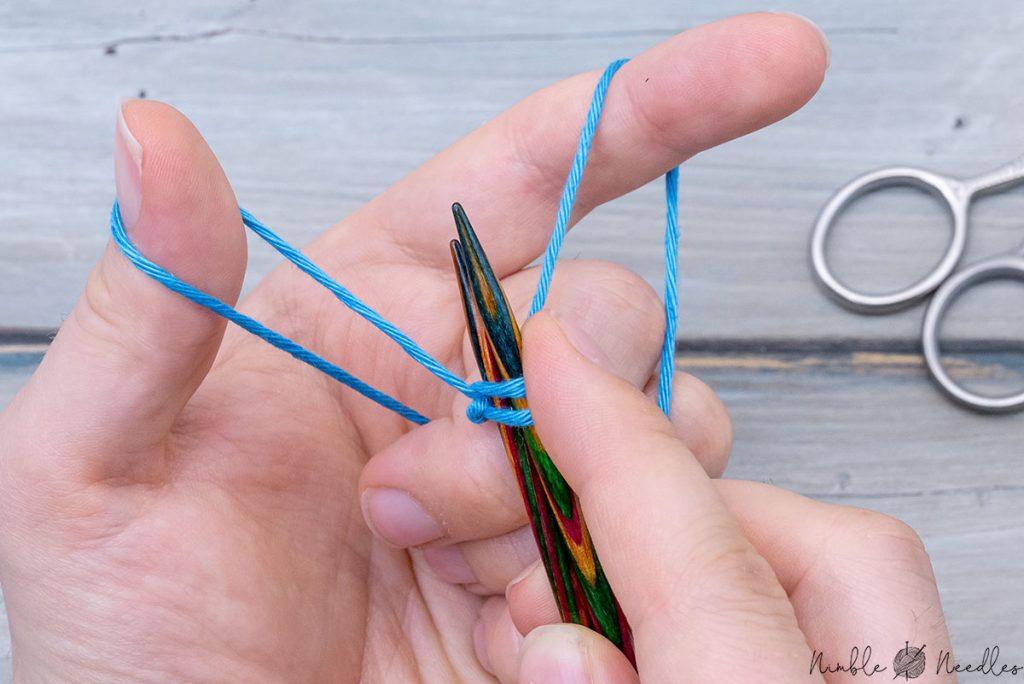
Step 8: Repeat steps 3-7 until you cast on the required number of stitches.
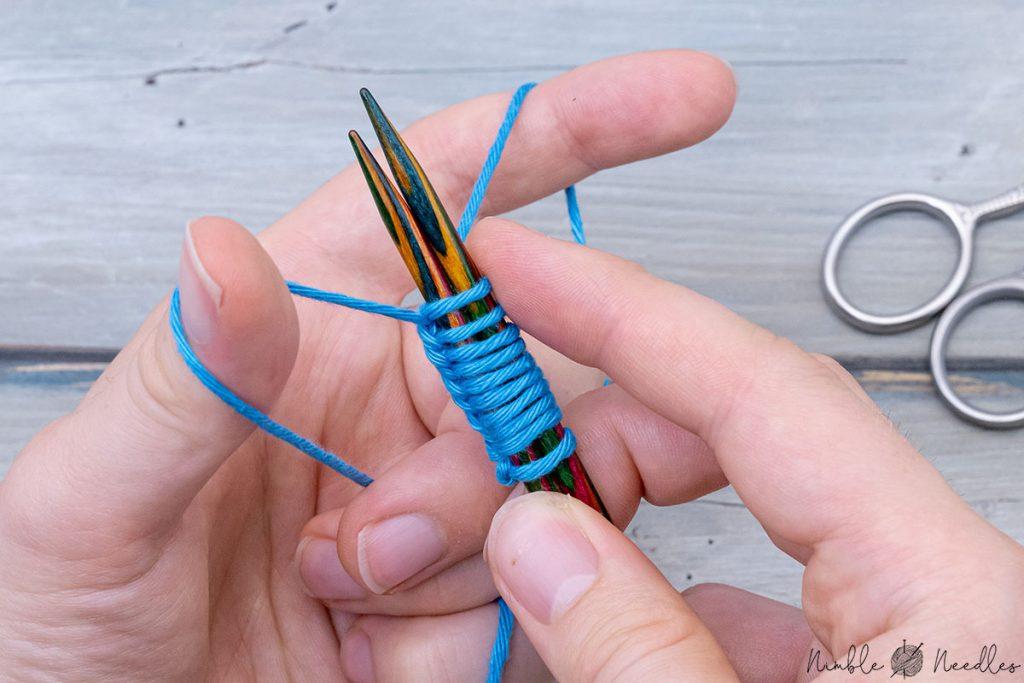
Step 9: Carefully remove the second needle and start knitting the normal way.
The cast-on stitches will look a bit wonky/loose as you knit across them. The fabric will even out after you covered a couple of rows and stretched your work in progress a bit.
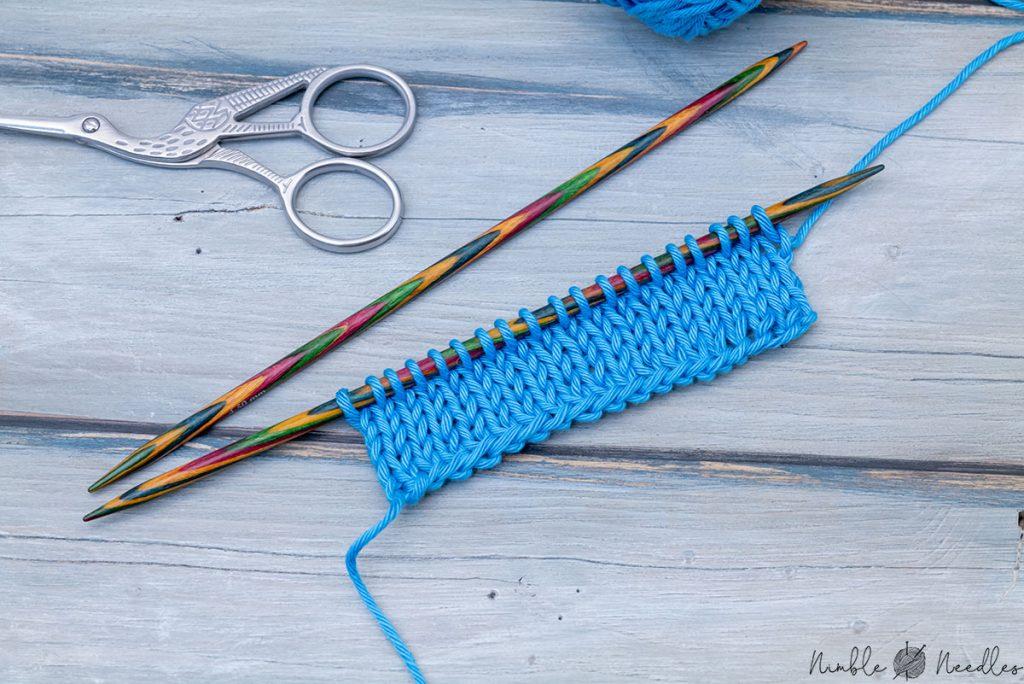
Make sure that you don’t accidentally catch the yarn with only one needle. This can happen when you pull the yarn tight and don’t pay attention or your needle tips are not parallel.
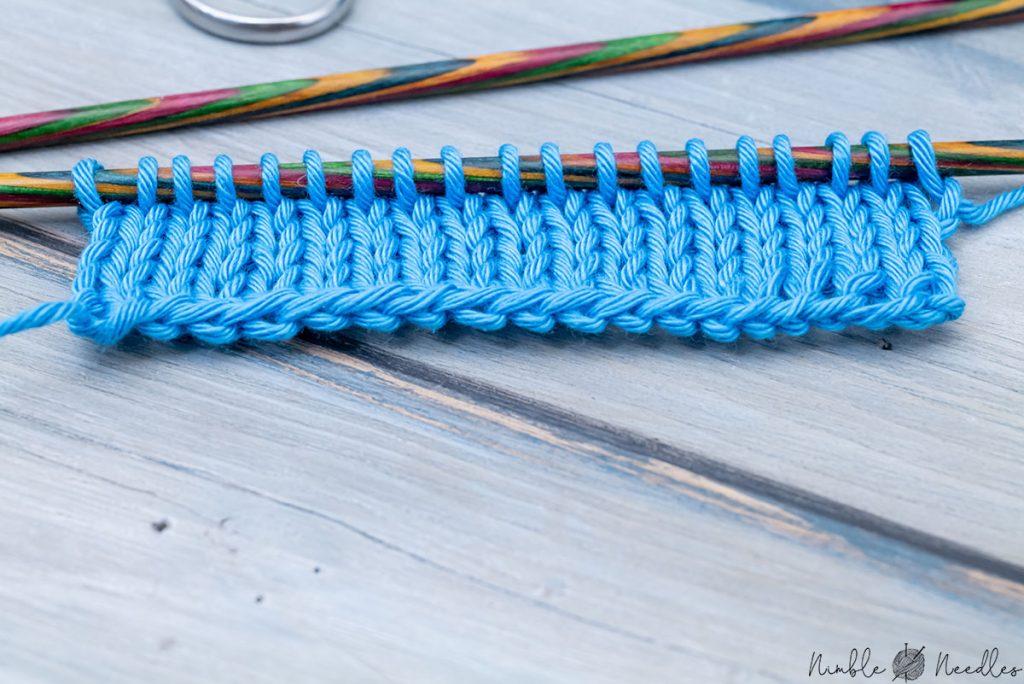
Tip: For this second alternative you can also toy around with the size of the second needle. You could even only use one needle (but 2 or 3 sizes bigger) instead if holding two needles at the same time is a bit too difficult for you.

